The New York Times (The Fix): How to create a playroom that appeals to children and adults
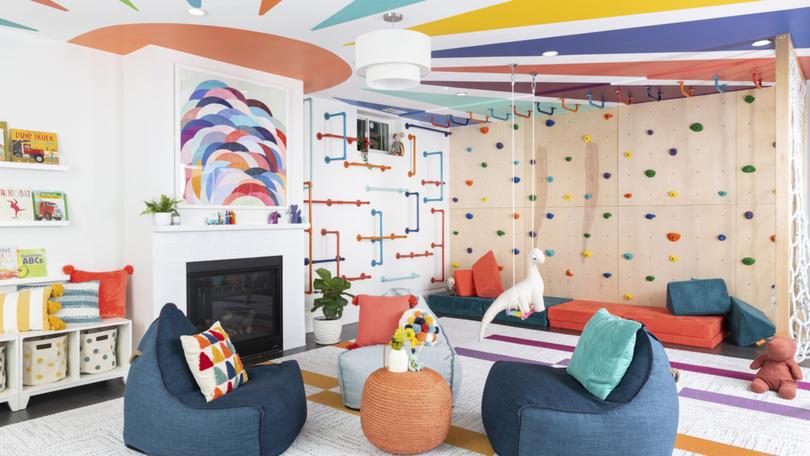
If you were a child again, what kind of playroom would you rather have: a basement filled with cast-off furniture (because no one cares if you jump on that worn-out sofa), or a colourful room that celebrates toys and art, inviting you to climb up the walls?
It’s not hard to guess which one many parents have recently been choosing for their children.
“When I grew up, the playroom was always the worst room in the house, because there wasn’t much attention given to it,” said Karri Bowen-Poole, a former teacher who founded Smart Playrooms, a design firm in Rye, New York. “So it’s been incredible for me to see the transformative thinking that’s happened. Design does affect kids — how they feel about themselves, what they do and what we can get them to do, just by how we create a space.”
Sign up to The Nightly's newsletters.
Get the first look at the digital newspaper, curated daily stories and breaking headlines delivered to your inbox.
By continuing you agree to our Terms and Privacy Policy.A thoughtfully designed playroom should be equally appealing to children and adults, said Anne Gillyard, an early-childhood development specialist who founded grOH! Playrooms, a design firm in Washington, D.C., with Jodi Arellano, a former teacher.
“One thing a lot of grown-ups feel when they walk into their children’s playroom is, ‘Oh, my God, I don’t want to be in here,’” Gillyard said. “But if we can create this space where the whole family — grown-ups and kids alike — feel welcome and want to spend time, then they’re more likely to use it, play in it, bond and just have this really rich relationship.”
So what makes for an extraordinary playroom? We asked designers for some tips on how to create one.
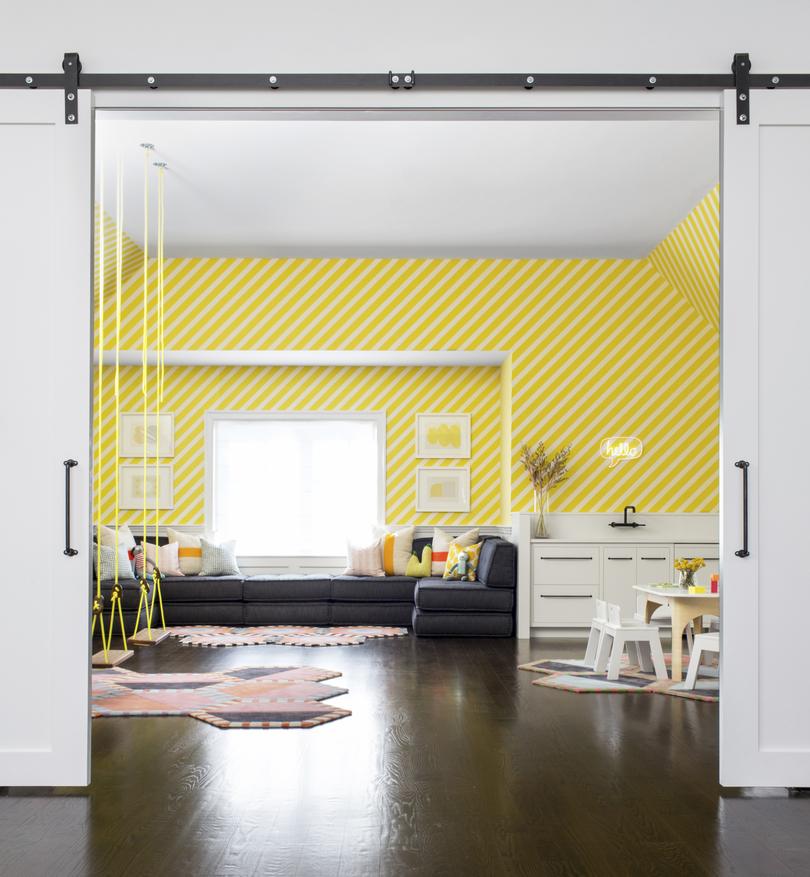
Have Fun With the Décor
If there is one room where you should feel free to play with colour and pattern, the playroom is it.
“This is the spot where you can do anything,” said Susana Simonpietri, a partner at Chango & Co., a New York City-based design firm that has attracted admirers on Instagram with photos of children’s rooms blasted with colour and pattern.
Simonpietri loves using bold, graphic wallpaper in playrooms, and has installed patterns with vibrant diagonal yellow stripes, illustrations of animals and large-scale overlapping geometric shapes. For durability, she sometimes chooses a vinyl-based wallcovering, but in most cases, a high-quality paper wallcovering will work just fine, she said, especially if the room has wainscoting.
Some of her clients worry that they’ll tire of those eye-catching patterns or that the wallpaper will be damaged over time, Simonpietri said. But she reminds them that it can be replaced fairly easily.
“People think that wallpaper is this thing you have to love for the rest of your life, but it’s actually temporary,” she said. “You can go for it now and change it later.”
Another option is to paint a mural or bright, solid colours on the walls and ceiling. The designers at grOH! Playrooms frequently design murals for walls and ceilings with motifs evoking mountains, rainbows and lily pads. Much like wallpaper, a mural may feel like a big decorative risk, but not if you remember that it can be painted over if you get tired of it.
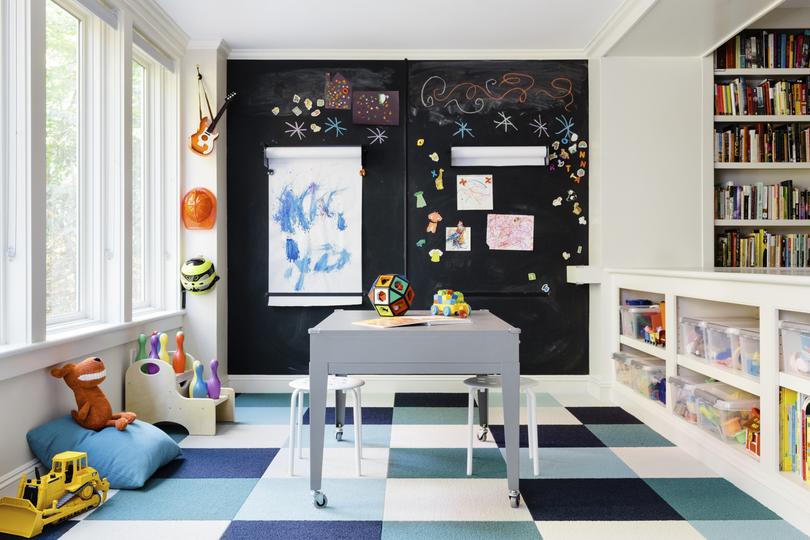
Prepare the Floor
Hardwood, painted wood and wall-to-wall carpeting are all acceptable flooring choices for a playroom. But if you’re renovating and have the opportunity to try something new, Bowen-Poole recommended choosing a tough material like luxury vinyl tile (also known as LVT) or laminate.
“They’re just super easy to clean,” she said. “Pets, kids and markers barely leave a mark.”
Mary Flo Ouellette and Steven Santosuosso, the partners of Squarehouse Studios, a design firm in Somerville, Massachusetts, like commercial-grade carpet tiles, such as those from Flor. Not only are they easy to clean, but if you buy a few extra, it’s easy to replace individual tiles in the future. That way, Ouellette said, “you don’t have to worry about spills, paint and that kind of thing.”
Layered on top of the primary flooring, area rugs can add softness and help define sections of the playroom. They’re also easily replaced when they get worn or stained.
In active areas where there is the risk of a crash landing, Bowen-Poole likes to roll out a thick foam mat. And when there’s enough space, she sometimes builds a pit of foam cubes.
Install Friendly Furniture
To furnish a playroom, Simonpietri prefers long, low seating options with no sharp corners, because they’re just as good for headstands and somersaults as they are for lounging with a book. Sometimes she installs a low-slung sectional sofa. Other times, she uses French-mattress-style cushions on the floor, piling them with throw pillows in patterned fabrics.
Either way, she said, “you want something that’s really well cushioned,” to prevent injuries. And if you choose mattress-size floor cushions, she added, they can be pulled out into the room for sleepovers.
Tables can also be designed to move. Jen Talbot, an interior designer in Chicago who began her career designing children’s spaces, often uses work tables on casters in playrooms.
“We do a lot of kids’ tables on wheels, so you can move things around,” Talbot said. When the table is in the middle of the room, it can be used for art projects, games and puzzles, she said, “but then it can move out of the way if they want to build some huge block structure.”
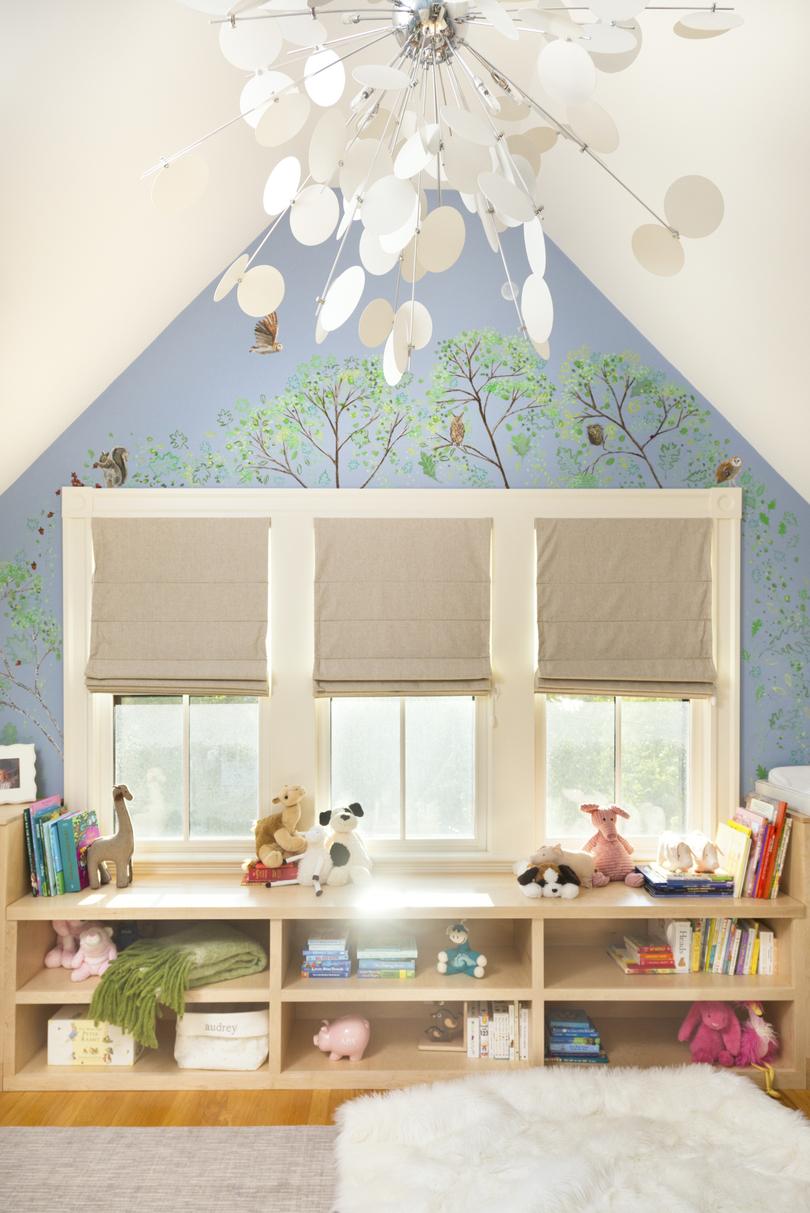
Create a Toy Hub
Storage is critical if you want to keep a playroom from becoming a chaotic mess. And the most vital piece, Gillyard said, is a storage wall she calls a “toy hub.”
This could be an inexpensive unit from Ikea or an elaborate set of built-ins, she said, but her favourite designs include cubbies that keep different types of toys separate. “It really helps kids know where things go back,” she said.
Smaller toys can be collected in bins or baskets that are stored in the cubbies. “Larger or strangely shaped toys can go on bins on the floor,” Gillyard said.
She also suggested having a set number of bins in the playroom and putting surplus toys in deep storage. “We often get the question, ‘Well, where is everything else?’” Gillyard said. “Our answer to that is toy rotation, with a library of toys located somewhere else.”
One advantage of this system, she noted, is that children often find old toys that have been in storage for a while enticing all over again.
If you’ll be adding built-in shelving to the room, Ouellette recommended keeping it fairly plain rather than opting for a juvenile design, so it can be used as book storage in the future. “If you’re going to do built-ins, and put that much work into a space,” she said, “you need to ask how it’s going to work for you in five to 10 years.”
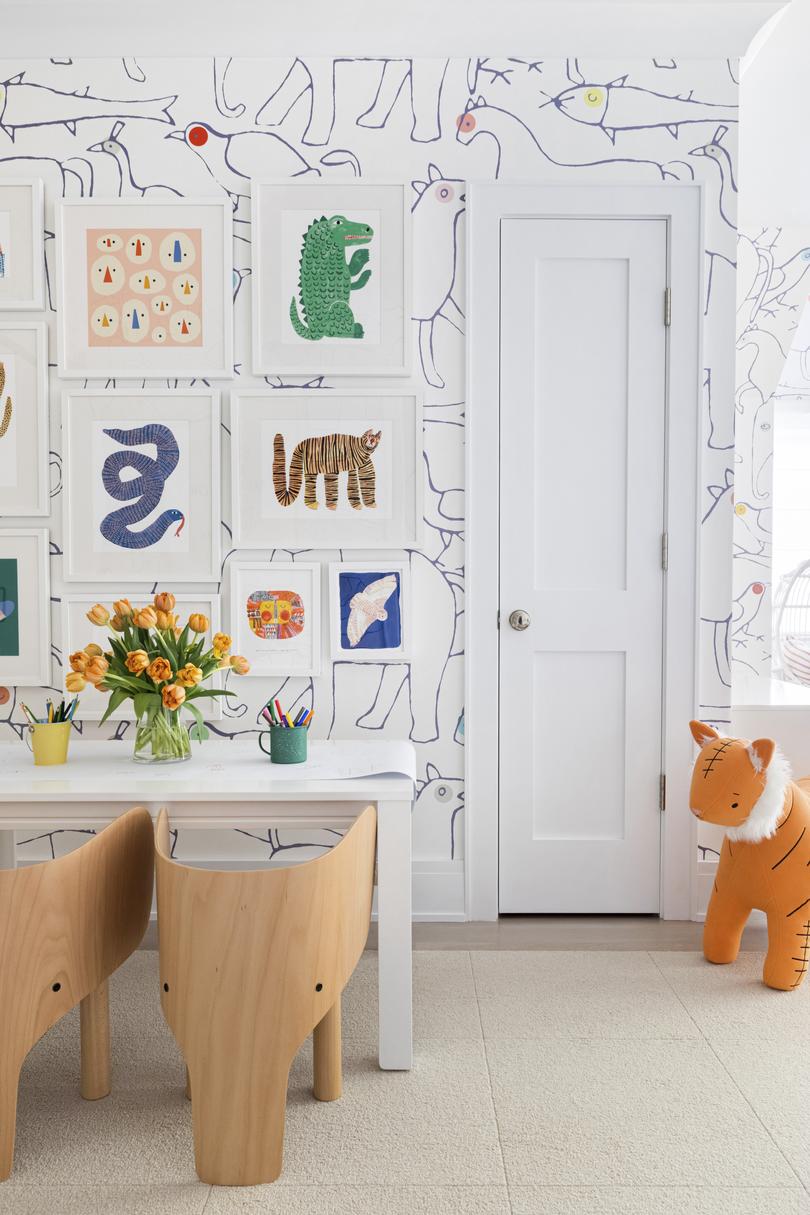
Add an Art Station
Beyond toys, an area for making art is a popular playroom feature. Depending on the shape of the room, a table and chairs could be set in an alcove or nook, or at one end of the room.
Walls near the table can play a supporting role. One or a few walls can be covered with chalkboard paint or a dry-erase coating to allow children to draw on the walls. Simonpietri has installed large bulletin boards. Talbot once strung a line with binder clips to create a place for displaying art.
For one playroom, Squarehouse Studios created a multifunctional wall by mounting floor-to-ceiling metal panels that work with magnets but are also coated with chalkboard paint. Then the designers added holders for rolls of paper that could be unfurled for painting.
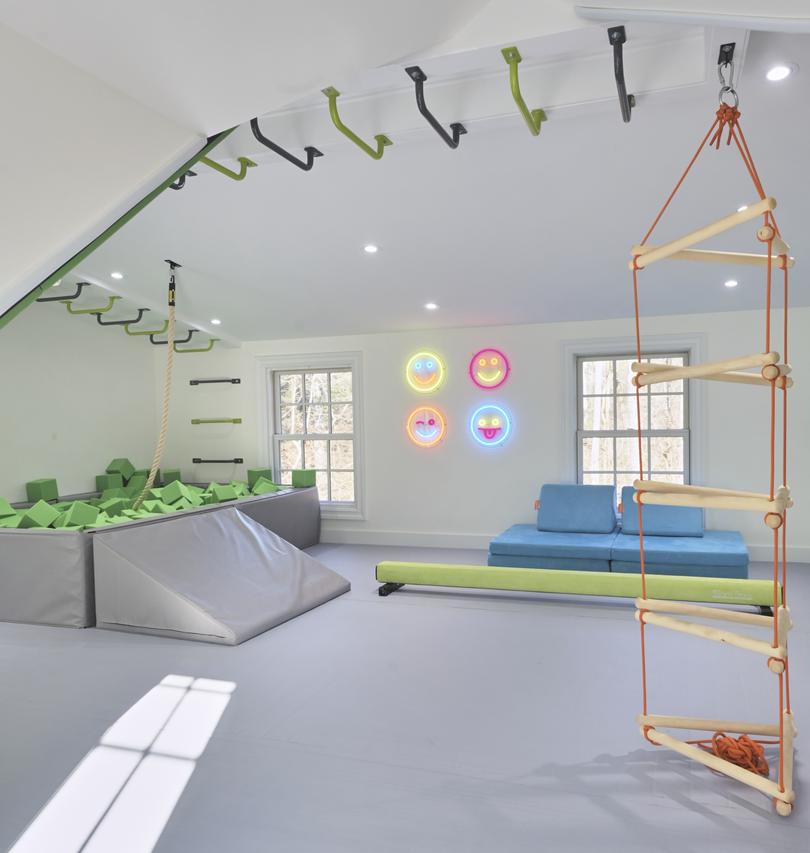
Let Them Swing, Jump and Climb
If you have the space, you can add features that make your playroom feel like an indoor playground.
When Bowen-Poole started designing playrooms, she focused on toy storage and art stations, she said. But today she often looks for opportunities to introduce equipment that focuses on gross motor skills, including monkey bars, rock-climbing holds and swings.
“We can use the walls and ceilings, and have all these activities that meet their sensory needs, because they can swing, jump and get vestibular input,” she said. When she couldn’t find the products she was looking for, Bowen-Poole co-founded a second company, Project Playroom, to make them, and now sells the pieces to other designers and to individuals.
Children will likely tire of having just a few bars or climbing holds, she said, so when she installs them, she tries to create a circuit: for instance, a wall of climbing holds that leads to a run of ceiling-mounted monkey bars that leads to a suspended rope.
Just remember that such play equipment needs to be securely mounted into a material stronger than drywall. “You need some form of blocking, unless you have a concrete ceiling,” Simonpietri said, referring to solid wood installed between ceiling joists that will accept mounting screws.
Simonpietri is also a fan of swings and suspended chairs in playrooms. “But we definitely crashed a couple of them when we first installed them,” she said. “That’s how we learned.”
This article originally appeared in The New York Times.
© 2023 The New York Times Company
Originally published on The New York Times
